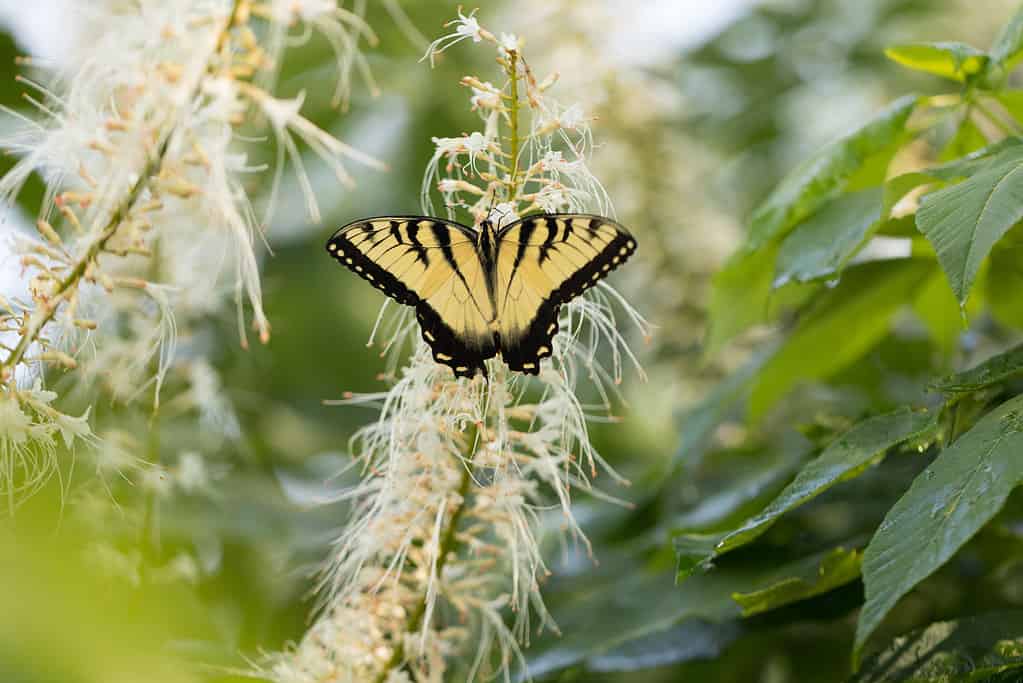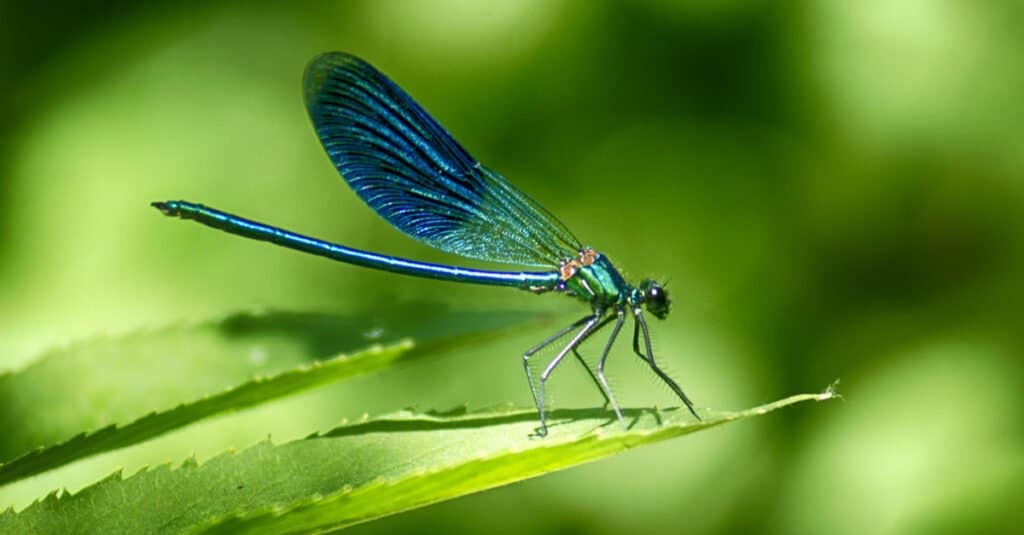Metamorphosis is a series of abrupt physical changes some animals and insects go through to become adults.
Summary
The word metamorphosis comes from the Greek word, metamorphose, which means “change of form.” A metamorphosis happens when an immature organism transitions into an adult during separate stages. During this change, the animal transforms into a completely different type of life form.
A common form of metamorphosis is when insects go through four stages of life which include egg, larva, pupa, and adult. Metamorphosis can also occur in amphibians, such as a tadpole growing into a frog.
How to Pronounce
Metamorphosis is pronounced [meh·tuh·mor·fuh·suhs]
Complete Metamorphosis in Insects
Many insects undergo a complete metamorphosis, or holometabolism. A complete metamorphosis includes four life stages.
- Egg: In the first stage, the insect begins as a very small egg.
- Larva: Next, the egg hatches into a larva. The larva eats to grow bigger and will molt its skin multiple times.
- Pupa: Once the larva grows large enough, it forms a cocoon around itself and can remain in the cocoon for days to months. During this time, it is called a pupa, and it’s developing its new body, organs, legs, and wings.
- Adult: When the adult insect is fully developed, it will break out of the cocoon.
Insects That Undergo a Complete Metamorphosis
Many insects complete this four-stage life cycle. Some examples include:

Butterflies are insects that go through complete metamorphosis, or holometabolism, which includes four stages.
©iStock.com/Roberto Galan
Incomplete Metamorphosis in Insects
Some insects do not go through a complete metamorphosis of four stages. These insects go through an incomplete metamorphosis, which includes three stages and is called hemimetabolism.
- Egg: The first stage is when the female insect lays its eggs.
- Nymph: The second stage is when the eggs hatch into baby insects without wings, also called nymphs. During this time, the insect will shed its exoskeleton multiple times, growing larger with each shedding.
- Adult: In the final stage, the nymph sheds its exoskeleton for the last time and grows wings.
Although not all insects have wings, insects with wings will always be the adult form of the organism. There are no species of juvenile insects that develop wings before adulthood.
Insects That Undergo an Incomplete Metamorphosis
Some examples of insects that go through the egg-nymph-adult cycle include:

Dragonflies undergo what is called incomplete metamorphosis, or hemimetabolism. That means they only go through three stages instead of our.
©Costea Andrea M/Shutterstock.com
Metamorphosis in Amphibians
Amphibians live on land but need water to survive. Most amphibians go through metamorphosis with an egg, larva, and adult stage, although there are some exceptions. Axolotls, for example, keep their gills and live permanently in the water.
Frogs and toads lay their eggs in the water. Tadpoles hatch from the eggs with a tail, but no legs. Tadpoles live in the water, but as they grow, they develop lungs, hind legs, and front legs. During this time, you can see the growing frog has both a tail and legs. Eventually, the tail disappears, and an adult frog or toad will emerge from the water.
Similarly, salamanders hatch from eggs as larvae, called tadpoles, much like frogs and toads. The salamanders grow and develop to be able to live on land but keep their tails. Some salamanders don’t undergo a metamorphosis to transform into land-living animals. For example, the lesser siren salamander remains in the water, keeps both lungs and gills as an adult, and only develops two legs.
Metamorphosis in Fish
Some fish undergo metamorphosis involving eggs, larvae, and adult stages. Flatfish have a remarkable transformation. They begin life hatching from an egg and looking like a typical fish. As the flatfish (flounder, sole, or halibut) develop, their body begins to alter. One eye migrates to the other side so that the fish has both eyes on the same side of its body. Its body begins to tip over so it now swims at an angle, and one side of its body grows darker. When the fish is fully grown, it sinks to the bottom of the ocean and becomes a bottom feeder.
Other fish that go through a metamorphosis include salmon. Salmon larvae hatch in freshwater streams and then go through a metamorphosis to allow them to live in salt water. Similarly, lampreys also hatch from eggs in freshwater. As the larva grows, they change into their adult form and can live in salt water.
Another striking metamorphosis occurs in European eels. This transformation takes years. The adult eels lay their eggs in the Sargasso Sea. Then the hatched larvae drift in the current for up to three years. Once they reach the European coast, they transform into the next stage, transparent fish called glass eels. Now, they are elvers, and they will darken in color. Next, the elvers become yellow eels that live in freshwater. They can remain yellow eels for over 20 years until they reach the final stage, silver eels, where they migrate to the Sargasso Sea to lay their eggs, and the cycle begins again.
Why is Metamorphosis Beneficial?
Scientists believe the main advantage of metamorphosis in insects and animals is reduced competition for resources among the young and the adults. The immature form lives in a completely different habitat and has a completely different diet from the adult. This means the adults are not competing with their young for food.
Another advantage is the ability to survive cold weather. For instance, some insects have protection from harsh winters while they remain safe inside their tough pupa cases until spring.
What Life Form Has the Longest Metamorphosis?
You may have heard of the 17-year cicada. It’s the insect that burrows underground for seventeen years and emerges as a nymph. Once emerged, they molt for the final time, their exoskeletons harden, and they head to the trees to begin their distinct mating calls.
However, the cicada is not the insect with the longest known transformation. Scientists have recorded a yucca moth that emerged from dormancy after 30 years and a species of woodboring beetle that emerged after 51 years.



